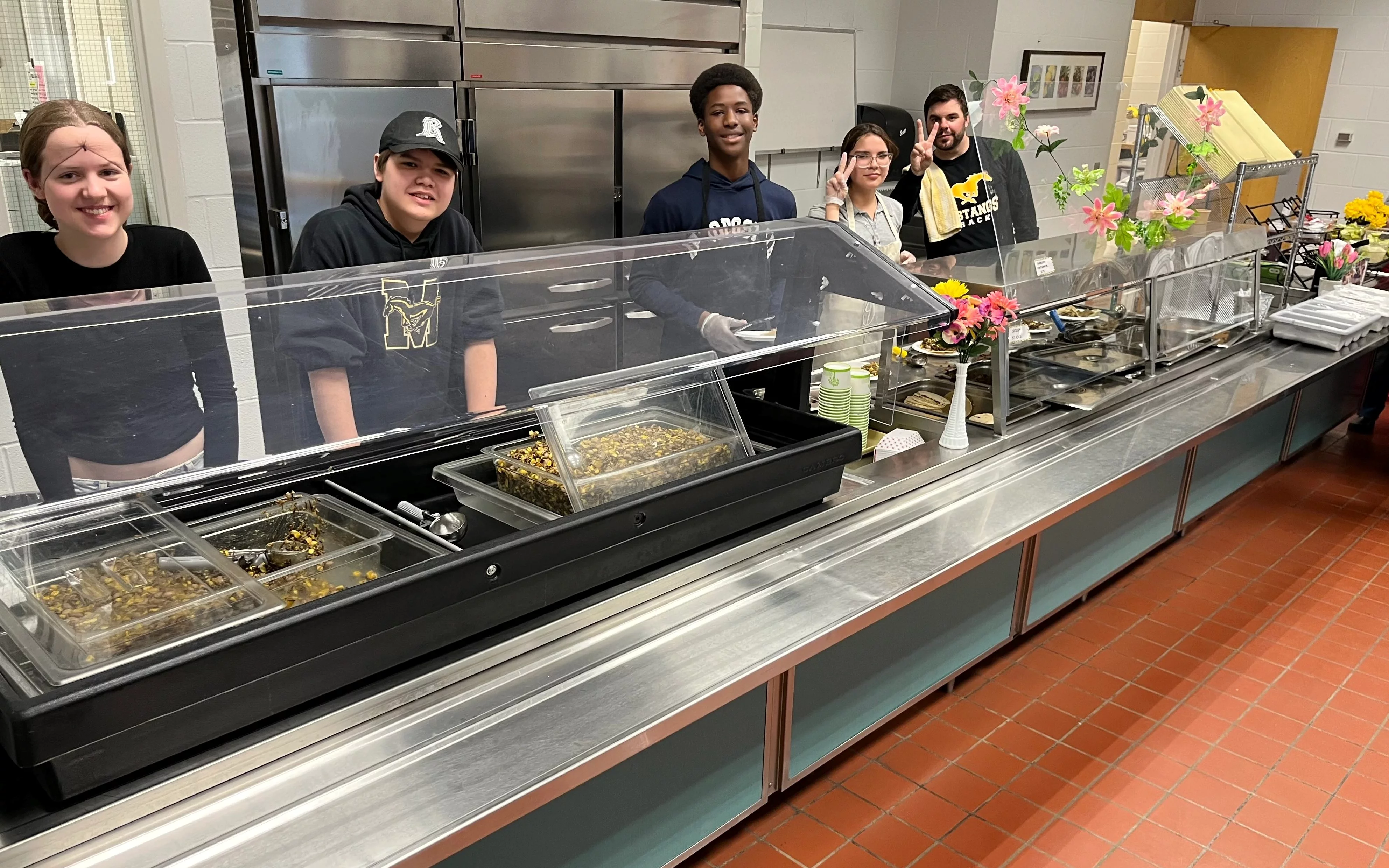Spotlight on Mount Royal’s Food Studies & Commercial Cooking classes
Mount Royal Collegiate is well known for some of its outstanding trades programs such as the High School Carpentry Apprenticeship Program (HCAP). However, the school is also a leader in Food Studies & Commercial Cooking as part of its Practical and Applied Arts (PAA) program offerings.
Food Studies & Commercial Cooking
Food studies classes in high school focus on both practical cooking skills and food-related knowledge. The emphasis is on hands-on, skills-based learning that introduces students to the world of food preparation, nutrition, hospitality and kitchen safety.
A commercial cooking class in high school simulates a real-world kitchen environment and prepares students for work in the food and hospitality industry. Unlike a basic home economics or foods class, commercial cooking focuses on industry standards, teamwork and career skills.
Offering Exceptional Experiences
Wayne Pilon, a Food Studies teacher at Mount Royal, recently secured special funding – in the amount of $3,000 – via the Dig In! Seed Grant from Farm to Cafeteria Canada.
He used the funds to arrange some amazing learning opportunities for the collegiate's Food Studies and Commercial Cooking students, including:
- Exposing students to what local producers have to offer by bringing in area speakers and professionals to enhance their learning.
- Giving them hands on experiences coinciding with guest presentations.
- The opportunity to plan, prep and serve lunch to the entire school under the direction of a nationally known, Saskatchewan-born, Indigenous chef: Chef Jenni Lessard.
Mr. Pilon said: “learning under Chef Jenni was a once-in-a-lifetime opportunity for many of these students—a chance to work side by side with an amazing Indigenous chef. We couldn't pass it up."
What Students Learned
Mr. Pilon says they started by bringing in Farm One Forty – a farm out of Vanscoy, SK that uses a holistic approach to producing pasture-raised pork and grass-fed beef and lamb. Though this partnership with Farm One Forty, students were able to learn about – and see for themselves – the difference between farm fresh meat versus what you get at the grocery store. Mr. Pilon says the students remarked on the vibrant red colour and the increased flavour. They noted it tasted gamier than what they were accustomed to.
The students next heard from the owner of a bison farm out of Biggar, SK called Bar over N7 meats. The owner of this operation – who also manages the herd at Wanuskewin (these bison are not processed) – provided students with an overview on bison farming. He brought in some ground bison to work with as well as some bison roasts.
The third local producer they brought in was from Kinsmen Glory Farms – an egg, poultry and vegetable operation run out of Martensville, SK. Their presentation covered how to break down a whole chicken, revealing where the meat is darker and contains the most fat and where the lean and whiter meat can be found. The students remarked on how these farm-raised chickens had thicker skin and more muscle. They learned this was because they were able to roam outdoors and were exposed to varying weather. The students observed how their flavour profile also differed.
The Grand Finale
For the grand finale in this learning journey, the Food Studies and Commercial Cooking classes were instructed to set aside the entire day on May 28 in preparation for serving a lunchtime meal to the school on May 29.
Enter Chef Jenni, who was very excited to give the kids a total culinary experience based on traditional, Indigenous, Saskatchewan-grown ingredients. Chef Jenni met with the students so they could plan the menu out together. They settled on:
- Bison birria tacos (refried lentil tacos for vegetarian/halal option) with bison au jus.
- Saskatoon berry salsa roja (red sauce).
- Charred corn, squash, bean (Three Sisters) and wild rice salad.
- Flor de Jamaica gelatina (hibiscus gelatin) with lake mint (wild mint that grows along lake shores) and Mexican vanilla whipped cream.
- Hibiscus tea.
Mr. Pilon notes that everything was made from scratch from the 800 corn tortillas to the hibiscus tea.
The day came and the meal was a success by all accounts. The students served up approximately 500 servings in a matter of hours. The gourmet cuisine was consumed so quickly that the cooking team even ended up baking some unplanned cookies (lemon and lake mint snap cookies) when they ran out of the hibiscus gelatin dessert.
At the end of the meal, there was no waste. What little leftovers there were, were made into a soup that was made available to students and staff free from the school servery.
The Findings
Mr. Pilon says there were many thanks and a lot of kudos for the food. But what made him feel even prouder was how impressed Chef Jenni was with the speed and efficiency of these students. They worked to divide up the work amongst themselves and self-organized and redirected their efforts as needed throughout the process.
As well, the students navigated the unexpected—as any true cook/chef needs to. Without a recipe to guide them, they tried to make a halal gelatin by guesstimating measurements. When it didn't set as they'd hoped, they pivoted to freezing the mixture overnight. And, voila, they had delicious halal sorbet in time for the big meal! Mr. Pilon says the innovation was “very good and very refreshing".
Mr. Pilon, like Chef Jenni, was impressed by his own students. He said there were some students who he thought might not enjoy the process since it was a ton of work and entailed working closely with a lot of people in a frenzied environment. But he didn't find a single student who didn't report loving the experience. Even when doing the clean-up, there wasn't a single complaint.
Chef Jenni's final comment at the end of the project? She said “book me in for this every year".
You can learn more about Mount Royal Collegiate by clicking here.


